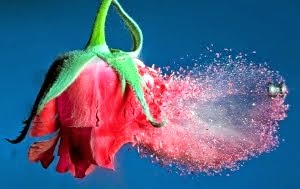Rio Carnival History
The roots of Carnival trace back to the ancient Romans and Greeks who celebrated the rites of spring. Across Europe, including France, Spain and Portugal, people annually gave thanks by throwing parties, wearing masks and dancing in the streets. Such traditions were carried over to the New World.
br />

The Portuguese first brought the concept of "celebration or carnival" to Rio around 1850. The practice of holding balls and masquerade parties was imported by the city’s bourgeoisie from Paris. However, in Brazil, the traditions soon became different. Over time, they acquired unique elements deriving from African and Amerindian cultures.
Groups of people would parade through the streets playing music and dancing. It was usual that during Carnival aristocrats would dress up as commoners, men would cross-dress as women and the poor dress up as princes and princesses - social roles and class differences were expected to be forgotten once a year but only for the duration of the festival.
Brazilians used to riot the Carnival until it was accepted by the government as an expression of culture. The black slaves became actively involved in the celebrations. They were able to be free for three days. Nowadays the slums' black communities are still the most involved groups in all the carnival preparations and they are the ones for whom Rio Carnival means the most.
By the end of the 18 century the festivities were enriched by competitions. People would not just dress up in costumes but also perform a parade accompanied by an orchestra of strings, drums and other instruments. These ever more organized competitions became the main attractions of the Carnival in Rio de Janeiro.
Until the beginning of the 20th century, street carnival in Rio was musically a very euro centric affair - Polkas, Waltzes, Mazurkas and 'Scottish'. Meanwhile, the emergent working class (made up mainly of Afro Brazilians, along with some gypsies, Russian Jews, Poles etc.) developed their own music and rhythm. These people were mostly based in the central part of Rio, on a land that the rich did not want - on the hills and swamps behind the dockyards - an area which came to be known as 'Little Africa' now recognized as the cradle of samba.
The parades were halted during World War II and started again in 1947. By then the main competition took place downtown on Avenida Rio Branco.
Carnival has gone a long way since it was brought to Rio, having become one of the biggest events in the World. One of the most important recent developments was that the biggest parade the Samba Parade moved from the streets downtown to the purpose-built Sambodromo.
One of the greatest elements of the Rio Carnaval is that it not only provides entertainment for many people around the world but it also gives a chance to learn about the true culture of Brazil. Carnival is very important to the Brazilians, it sums up their culture.
It is a euphoric event where people dance, sing, party and have tons of fun. There are many parties that take place before, during and after Carnival all night and all day. It allows someone's true heart to come out and have as much fun as possible.
Rio Carnaval is the result of months of preparation. People eagerly anticipate the start of each year's Rio Carnival. It begins with the crowning of the Fat King (King Momo), who is presented with a giant silver and gold key by the city's mayor.
The most famous Carnival bands are :
Cordão do Bola Preta - one of the most traditional bands parading downtown Banda de Ipanema marches on three separate days in Ipanema, followed by a huge crowd with lots of gay revelers Suvaco do Cristo parades in the Botanic Garden District, right below Christ-the Redeemer statue's arm. The name in English translates to "Christ's armpit", and was chosen for that very reason Carmelitas was supposedly created by nuns but in fact it is just an allegory of the band. It parades in the hills of Santa Teresa.
The operation of a Carnival street band is really quite simple. First people gather at some well known spot, such as a square or neighborhood bar. After a couple or more hours of getting together, the band starts marching its way down the streets. Do not miss the initial warm-up gathering. Enjoy the show performed by drag queens and children that stop cars and buses trying in vain to make their way through the crowds. Drivers caught in a band gridlock have nothing to do but relax and enjoy the moment.
Seniors and children of all ages also participate in these marches, so this is the ideal time for the whole family to have a good time together. South Rio bands march in the afternoon. Gathering usually starts around 4 p.m.
Where the bands pass, streets are closed to traffic and bus routes are changed, to avoid the inevitable jam. Some bands attract as many as over 10,000 participants. Most bands also have official T-shirts for sale on the spot for about US$10, to help with the costs. They make great souvenirs, as they are sold only on Rio Carnival days.

Although Carnival (Carnaval in Portuguese) is celebrated in towns and villages throughout Brazil and other Catholic countries, Rio de Janeiro has long been regarded as the Carnival Capital of the World. The Rio Carnaval is not only the biggest Carnival, it as also a benchmark against which every other carnival is compared and one of the most interesting artistic events on the Globe. Almost everyone has heard of the Rio Carnaval. Foreign visitors to it alone number around 500,000 every year.
Rio Carnival is a wild 4 day celebration, 40 days before Easter. It officially starts on Saturday and finishes on Fat Tuesday with the beginning of Lent on Ash Wednesday after which one is supposed to abstain from all bodily pleasures. Carnival with all its excesses, celebrated as a profane event, can be considered an act of farewell to the pleasures of the flesh. It usually happens in February, the hottest month in the Southern Hemisphere, when the Rio summer is at its peak.
There are carnival celebrations in virtually every corner of Brazil, the best-known ones taking place in Recife together with the neighboring Olinda (in the North of Brazil) and Salvador. But the biggest and most famous carnival is undoubtedly the Carnival in Rio de Janeiro.
One of the greatest elements of the Rio Carnaval is that it not only provides entertainment for many people around the world but it also gives a chance to learn about the true culture of Brazil. Carnival is very important to the Brazilians, it sums up their culture.
It is a euphoric event where people dance, sing, party and have tons of fun. There are many parties that take place before, during and after Carnival all night and all day. It allows someone's true heart to come out and have as much fun as possible.
Rio Carnival is the result of months of preparation. People eagerly anticipate the start of each year's Rio Carnival. It begins with the crowning of the Fat King (King Momo), who is presented with a giant silver and gold key by the city's mayor.
Then it is Carnival all over the place, in the streets and squares, bars, clubs and all other venues, taking over the whole city of Rio and culminating in the Rio Carnival Parade also known as the Samba Parade.
Rio Carnival music
Almost all of the music played during Rio Carnival is samba. It is a uniquely Brazilian music originating from Rio, a dance form that was invented by the poor Afro-Brazilians.
The word samba comes from the Angolan world semba referring to a type of ritual music. The word had a variety of meanings to the African slaves brought to Brazil during the 17th, 18th and 19th centuries. It meant to pray or invoke the spirits of the ancestors and the gods of the African Pantheon. As a noun, it could mean a complaint, a cry, or something like "the blues".
The Samba Schools
The samba schools entertain the community through samba nights and create a pageant for the Samba Parade. They have to pick themes, write music and lyrics, make costumes and floats and practice all year around to succeed in the Parade. The samba schools are vital elements of Rio Carnival. They are social clubs representing a particular neighborhood, usually a working class community of the slums (favelas). They have a samba hall to entertain and practice their samba, and a separate production unit to make their costumes and floats for their Rio Carnival Parade.
The samba schools entertain the community through samba nights and create a pageant for the Samba Parade. They have to pick themes, write music and lyrics, make costumes and floats and practice all year around to succeed in the Parade.
Street Bands and Parties
Each neighborhood in Rio has its favorite Carnival street band(s). There are more than 300 of them in Rio nowadays and each year this number increases. Each band has its place or street for its parade and the big ones usually close the streets to the traffic. They usually start in January and last till the end of Carnival. Since the beginning of the year, you can often see groups of people dancing samba in the streets of Rio at the weekends and during Carnival.
Frequently the people who organize the band's procession compose the music for their own parade.
The Carnival bands consist of an orchestra, mainly brass. They march along a predetermined route or stay at the same place, however, are always joined by hordes of enthusiastic samba revelers dressed in costumes, bathing suits, plain clothes, and even many in drag. Blocos are usually smaller, attracting more of a neighborhood crowd. Bandas are bigger in size.





































Post A Comment:
0 comments: